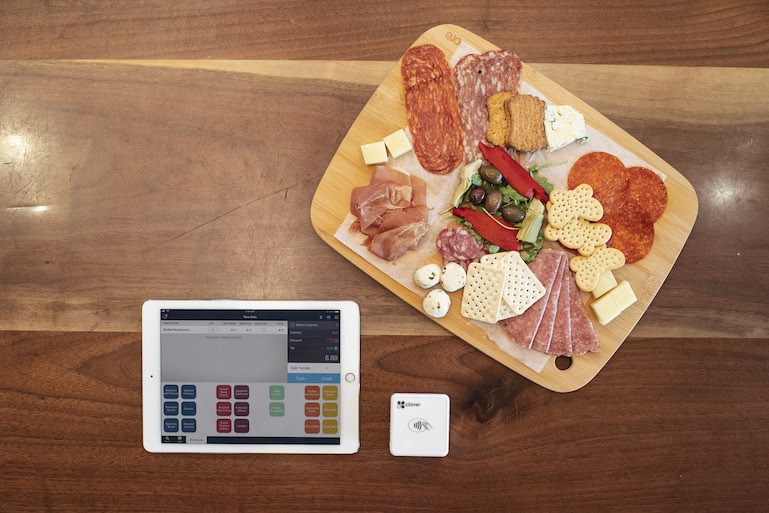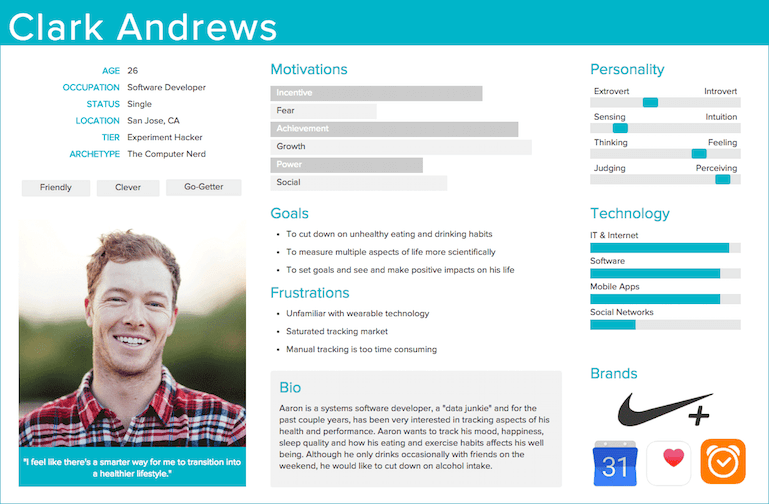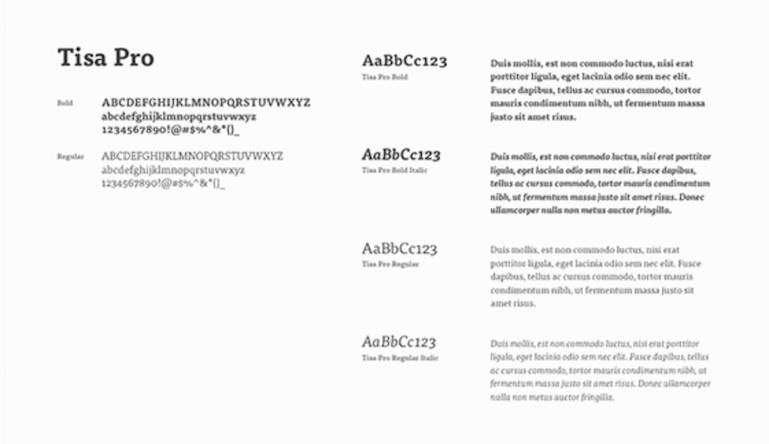
How to Build Your Restaurant’s Brand: A 9-Step Guide
The restaurant industry is a crowded space – and for new and existing restaurants, learning how to build your restaurant’s brand is a critical step in penetrating a local market and capturing a dedicated customer base.
Add that to the list of other hurdles new restaurants need to jump – from hiring a staff, finding a great location, designing your restaurant’s floor plan layout – as well as online ordering disrupting the traditional dining experience for restaurants, having a weak brand identity can kill a restaurant.
What Is Restaurant Branding?
Restaurant branding is more than just designing a logo for your business. It includes understanding an audience and local market, creating an identity for your restaurant, and building a strong experience and mission that builds brand advocates and solidifies your restaurant.
A strong restaurant brand will work as a foundation and model for crafting how people recognize your restaurant, feel about your restaurant, and interact with your restaurant – both physically and digitally.
Restaurant owners typically don’t have a background in brand building and design, so where does one start when creating a brand? You could work with a branding consultant or agency, but unless you’re a large restaurant franchise, that can be extremely expensive and is not within your budget.
For small-business restaurant owners, there are some basic fundamental tips for building a strong brand.
9 Tips for Building Your Restaurant’s Brand
The following is not an exhaustive list of branding tactics your restaurant should leverage but is a great start to building a strong brand in 2020:
1. Create User Personas
Many businesses want to hit the ground running – and we love that attitude.
However, if you fail to understand your core customers, restaurants will struggle with many problems – from marketing to branding.
Customer personas help restaurants identify key customer segments to help determine what directions a restaurant should go in the future to create a strong brand and restaurant atmosphere.
Restaurants can do this by wireframing and whiteboarding out 2-4 key personas. For example, let’s use a pizza parlor to help visualize this.
A pizza parlor has an opportunity to market to “parents looking for a cheap family dinner spot”, “young adults looking to watch the game”, “parents looking to host a child’s party”. From there, restaurants can begin to understand how those user groups think, what their problems are, what they are searching, and how your restaurant can help solve their problems.

Once a restaurant has a blueprint of its core customer profiles, it can integrate those key customer groups into its branding. Knowing who your customers are will help a restaurant create messaging, assets, and overall mission, which begins to craft a brand for your restaurant by itself.
SEE ALSO: 13 Tips For Marketing Your Restaurant Business
2. Know Your Market and Competition
Another fundamental strategy for new restaurants is to do a SWOT and competitor analysis of similar businesses in your market. This will help build your sales playbook, your marketing strategy, your business plan, and branding.
Analyzing your competitors will show what successful restaurants are doing in terms of their branding, and also show what’s working. You want to avoid replicating exactly what those restaurants are doing, as you want to build a unique brand representation for your restaurant.
However, seeing what your competitors are doing will help you identify what types of branding assets, messaging, and positioning work in your market and can serve as inspiration when creating your brand.
3. Define Restaurant Mission Statement
One of the first things you should do when starting a restaurant is defining your values and restaurant mission statement. This will be important for how you run your restaurant and what decisions you make when critical moments arise in your restaurant’s lifecycle.
A mission statement will clearly define what your restaurant is, what you want to accomplish, and how you value worth as a business. In a sense, a mission statement is the spine of your restaurant’s branding.
If your mission is to be a new inclusive hangout for local adults to come hang out, have fun, and be a safe space, then this will help steer your restaurant’s brand into a specific direction. Your branding should convey your restaurant’s mission statement through imagery and feeling.
4. Design Brand Logo and Assets
Once you have research on your customers, competitors, and local market, you can start designing your logo and brand assets.
This is the most public-facing step in building a new brand or for restaurants going through a rebrand.
Research frameworks and historical designs other businesses in your industry are using. For example, if you’re opening a new brewery, you should research the best brewery and craft beer logos as a starting point. From there, you would learn that most brewery and beer logos are grouped into four main styles: emblems and badges, wood-cut, ingredients-themed, and equipment-themed.
Restaurant owners should do the same to give their logo a concept that can be replicated across multiple design elements and outlets. Build brand elements that can be repurposed across your merchandise, digital footprint, and more. HubSpot has done a great job at this, using its custom branding across all of its landing pages:

This consistency helps create a feeling of trust and familiarity with a brand, building strong brand advocates in the process.
SEE ALSO: How To Boost Restaurant Profits Without Discounts
5. Develop a Brand Guidelines Kit
Once your restaurant has finalized its logo and branding assets, it’s time to create a brand guidelines kit. This will be a centralized repo that includes all of your restaurant’s logos, imagery, typography, color palette, and rules for how and when each logo, color, etc. should be used.
This is important for larger restaurants, as it will help businesses stay consistent in their design assets as well as providing outside sources such as PR or journalists properly represent your brand and follow your restaurant’s brand guidelines.
Most businesses create a brand guidelines kit early in their development, so there are countless examples to model your kit after. One of my favorites is Medium:


6. Develop a Brand Voice and Tone
Once you’ve outlined the graphics and assets for your brand, it’s time to develop your brand voice. Brand voice has become a central part of creating a strong brand with the advent of social media. Businesses and customers now have more interaction than ever before because of social, providing a direct line of communication from the business to the customer.
Developing a voice and tone for your restaurant helps humanize your restaurant. It gives your restaurant a specific voice – from how they represent themselves and how they communicate with customers.
Brand voice is an important step in building brand advocates, but it is an intangible and nuanced process. Create rules for how your brand responds to feedback on social, how you use taglines in your advertising, and what types of language your restaurant speaks to.
The user personas and mission statement covered earlier in this article are both great blueprints to work off of for creating the right brand tone for your restaurant.
7. Emphasis on Customer Service
Building a brand is about creating a sense of trust and recognition with your customers. That is why customer service should be an integral part of your restaurant’s branding.
When you’re developing your restaurant’s mission statement and core values, be sure to always keep the customer in mind. That may seem obvious, but every time you make a decision, but sure to put yourself in the shoes of your customers. Does the decision benefit them? If it doesn’t, it may not be the right decision.
Maintaining an emphasis on customer service will help build an identity of trust and helpfulness for your restaurant’s brand.
SEE ALSO: 13 Simple Ways to Reduce Waiting Times in Restaurants
8. Highlight Brand Advocates
A byproduct of amazing customer support is building strong brand advocates. Brand advocates are your most-frequent visitors, your highest spenders. They are the ones evangelizing your restaurant and helping with word-of-mouth referrals.
The best brands highlight their best customers. Use these customers in your marketing collateral and on your website. Invite them to exclusive private events or customer appreciation days at your restaurant. Give them loyalty points and connect with them outside of your restaurant.
In the end, you’re building a community at your restaurant. And the core components of a community are the people inside it who feel a sense of connectivity. Be sure to weave principles of brand advocacy into your restaurant’s branding.
9. Leverage Your POS System
A restaurant would be lost without its POS system. It’s the core of running a restaurant business. That’s why it’s crucial to build your restaurant’s brand through your POS system.
Think outside the box here. You want to build a brand that is helpful, fun, targeting your demographics, provides great support, and highlights your best customers. How can your POS system help accomplish this?
Things such as easy check splitting, loyalty rewards, priority access, and more are all things that POS systems can help restaurants manage when building a brand.
In the End, It’s On You to Maintain and Foster a Great Brand Experience
Great branding is what separates the best restaurants from the rest of the pack. While you will need some help with the technical aspects of developing your brand, the more nuanced steps will be a day-to-day process.
Your restaurant won’t suddenly have a brand representation of a company with amazing customer service from day one – you’ll need to back it up with your actions. But over time with a consistent and dedicated effort, your restaurant will be defined by the brand it has built.
Want to try ShopKeep for yourself?
Just answer a few easy questions.
Need help finding the right point of sale?
Just complete the form. We’ll call you right back to explain how ShopKeep can work for you.
Hit the ground running.Sprinting, in fact!
Read our free, comprehensive guide, Small Business 101, to learn all you need to know about starting a thriving business.

